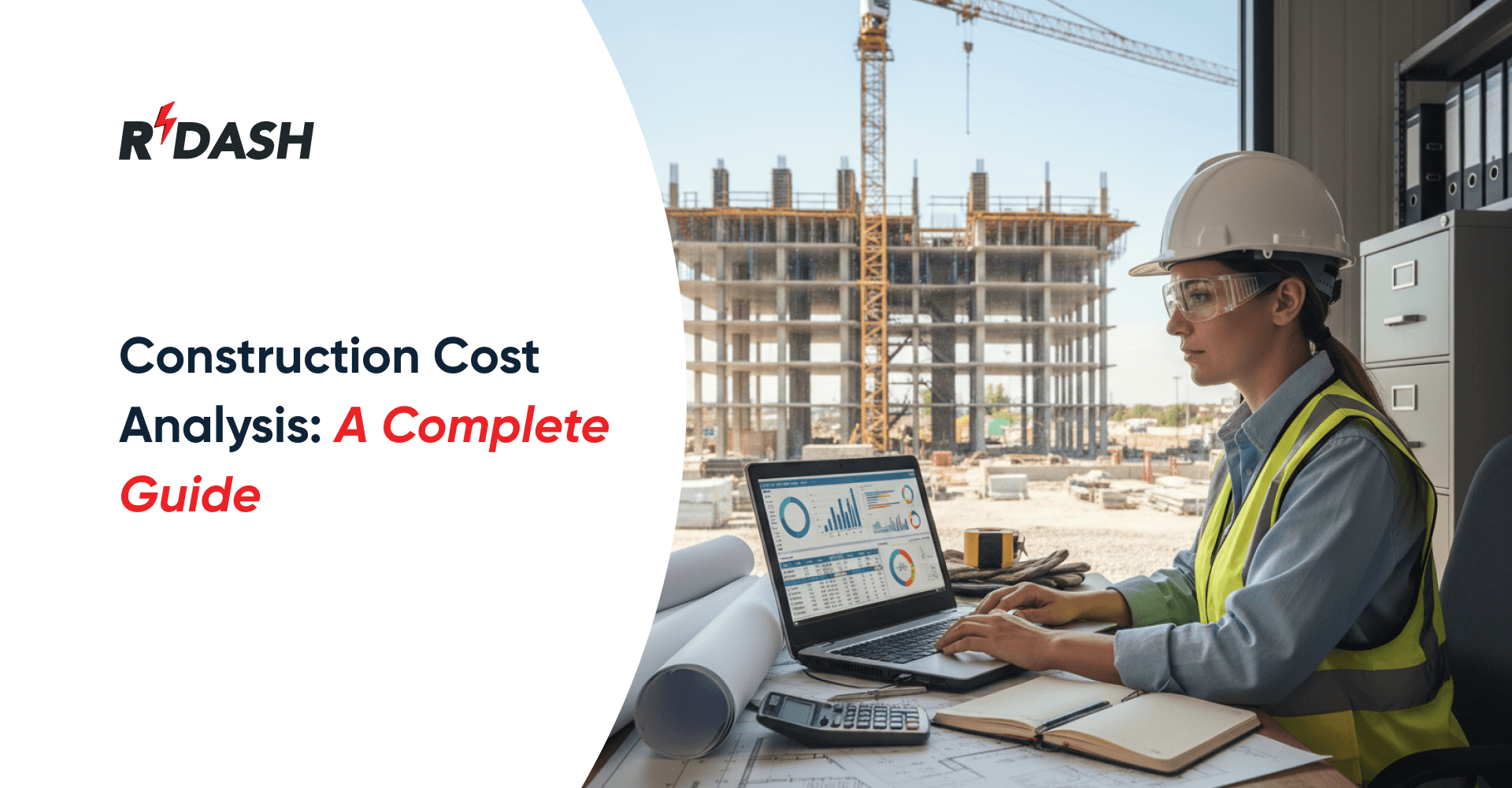Design and build businesses in India are witnessing tremendous growth opportunities, driven by rapid urbanization, infrastructure development, and an increasing demand for innovative building solutions. This landscape presents a golden opportunity for these businesses, particularly startups, to scale and establish themselves as industry leaders. However, scaling in India’s dynamic market requires more than just ambition; it necessitates a well-thought-out strategy that addresses the unique challenges and opportunities within the Indian construction sector.
In this comprehensive guide, we’ll explore key strategies to help design and build businesses in India expand effectively, focusing on technology adoption, brand building, strategic partnerships, operational efficiency, talent acquisition, market expansion, and leveraging India’s thriving startup ecosystem.

Embrace Technology for Enhanced Efficiency and Innovation
Technology is the backbone of modern construction and design. In India’s competitive market, businesses that leverage the latest technological advancements are better positioned to scale efficiently and deliver high-quality projects. Here’s how technology can drive your business’s growth:

- Building Information Modeling (BIM) : BIM is revolutionizing the construction industry by providing detailed, 3D models that integrate data from various stages of a project’s lifecycle. For design and build startups, BIM can significantly enhance project coordination, reduce errors, and improve cost estimation. By adopting BIM, businesses can manage larger and more complex projects with greater precision, leading to improved client satisfaction and profitability.
- Construction Management Software : Managing multiple projects simultaneously is a common challenge for growing businesses. Construction management software solutions, such as Procore, Builder trend, and Co-Construct, offer tools to streamline project management, from scheduling and budgeting to communication and documentation. These platforms enable businesses to maintain control over project timelines, costs, and resources, even as the scale of operations increases.
- Virtual Reality (VR) and Augmented Reality (AR) : VR and AR technologies are gaining traction in the construction and design sectors, offering clients immersive experiences that allow them to visualize projects before construction begins. This can be particularly advantageous for design startups, as it enables clients to experience proposed designs in a more tangible way, leading to quicker decision-making and higher client satisfaction.
- Drone Technology : Drones are becoming an indispensable tool in construction, particularly for site surveys and progress monitoring. They provide real-time aerial data that can be used to create accurate site maps, monitor construction progress, and identify potential issues early on. For build startups, incorporating drone technology can enhance site safety, improve project timelines, and provide clients with detailed progress reports.
- Sustainability Through Green Technology : As sustainability becomes a growing concern in India’s construction industry, incorporating green technologies and practices can set your business apart. This includes using energy-efficient materials, implementing waste reduction strategies, and adopting renewable energy solutions. Not only does this appeal to environmentally-conscious clients, but it also aligns with India’s increasing focus on sustainable development.
Tip : To stay competitive, regularly assess emerging technologies and consider how they can be integrated into your business operations. Early adoption of innovative tools can provide a significant advantage as your business scales.
Develop a Strong Brand Identity to Stand Out
In a crowded market, a strong brand identity is essential for attracting clients, partners, and talent. Your brand should communicate your business’s unique value proposition and resonate with your target audience. Here’s how to build a compelling brand:
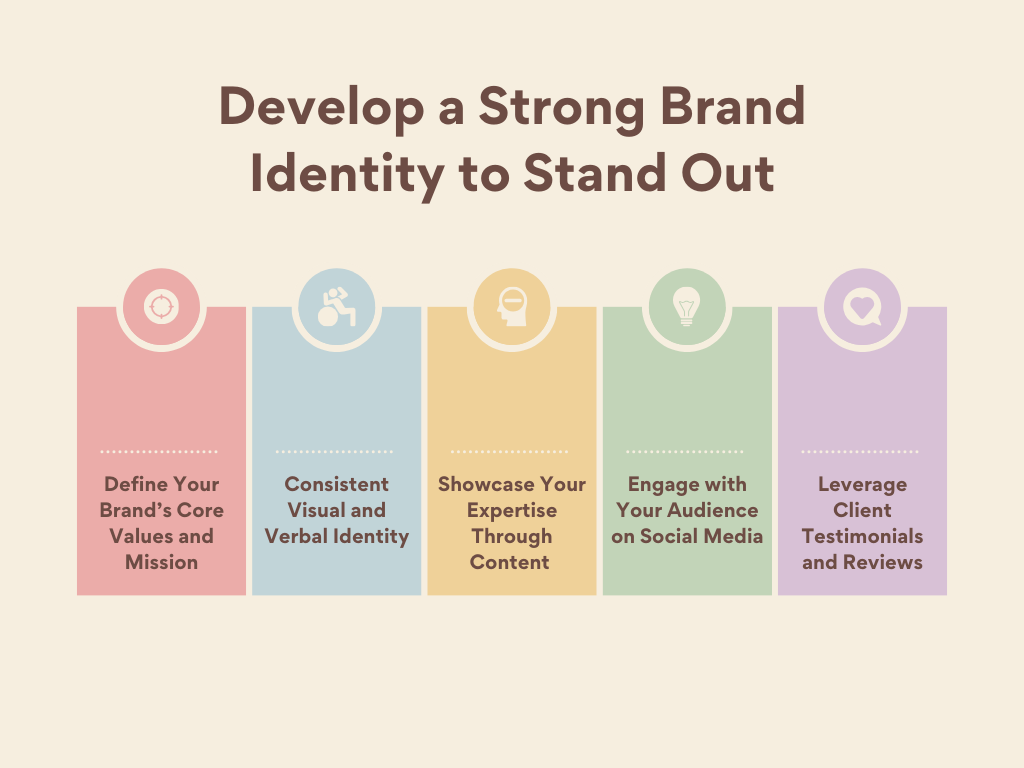
- Define Your Brand’s Core Values and Mission : Your brand’s core values and mission should reflect what sets your business apart from competitors. Whether it’s a commitment to innovative design, quality craftsmanship, or sustainability, clearly defining these elements will guide your branding efforts and help you connect with clients who share your vision.
- Consistent Visual and Verbal Identity : Consistency is key when it comes to branding. Ensure that your logo, color scheme, typography, and messaging are consistent across all platforms, from your website and social media to marketing materials and client presentations. A cohesive visual and verbal identity makes your brand more recognizable and memorable.
- Showcase Your Expertise Through Content : Content marketing is a powerful tool for building your brand’s authority in the design and build industry. Consider creating a blog, case studies, and video content that showcase your expertise, share industry insights, and highlight successful projects. This not only builds credibility but also helps with search engine optimization (SEO), making it easier for potential clients to find your business online.
- Engage with Your Audience on Social Media : Social media platforms like LinkedIn, Instagram, and Facebook offer valuable opportunities to engage with your audience and build brand awareness. Share project updates, behind-the-scenes content, client testimonials, and industry news to keep your audience engaged and informed. Regular interaction with followers can also humanize your brand and build stronger client relationships.
- Leverage Client Testimonials and Reviews : Positive client feedback is one of the most effective ways to build trust and credibility. Encourage satisfied clients to leave reviews on platforms like Google, Houzz, or your social media pages. Highlight these testimonials on your website and marketing materials to showcase your track record of delivering successful projects.
Tip : As you scale, consider investing in professional branding and marketing services to ensure your brand remains strong and consistent across all channels.
Build Strategic Partnerships to Access New Opportunities
Strategic partnerships are crucial for scaling a design and build business in India. By collaborating with other companies, you can access new resources, expertise, and market opportunities that would be difficult to achieve on your own. Here’s how to build effective partnerships:
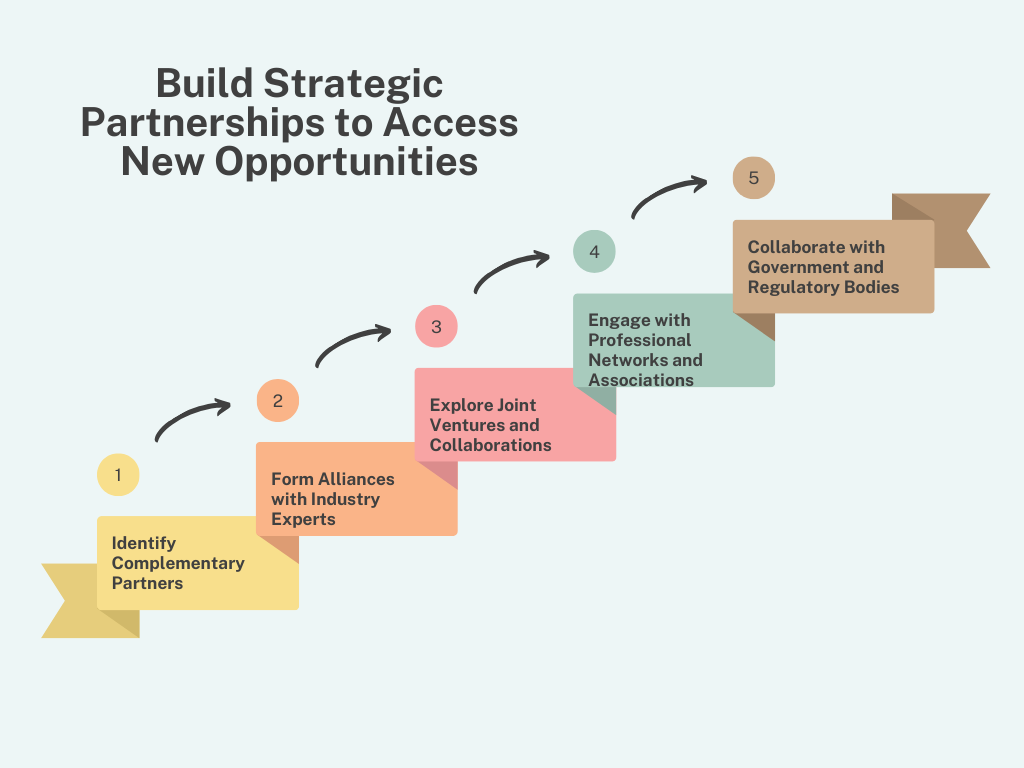
- Identify Complementary Partners : Look for partners whose strengths complement your own. For example, a design startup might partner with a construction firm to streamline the transition from design to build, ensuring seamless project execution. Similarly, a build startup could collaborate with material suppliers to secure better pricing and priority access to high-quality materials.
- Form Alliances with Industry Experts : Partnering with industry experts, such as architects, engineers, and consultants, can enhance your project’s quality and credibility. These alliances can also provide valuable insights and guidance, helping you navigate complex projects and regulatory challenges more effectively.
- Explore Joint Ventures and Collaborations : Joint ventures and collaborations with other companies can open doors to larger projects and new markets. For instance, partnering with a company in a different region can help you expand geographically, while a collaboration with a tech startup can bring innovative solutions to your projects.
- Engage with Professional Networks and Associations : Joining professional networks and industry associations, such as the Indian Green Building Council (IGBC) or the Confederation of Indian Industry (CII), can provide access to valuable networking opportunities, industry events, and resources. These connections can lead to partnerships, new clients, and insights into industry trends.
- Collaborate with Government and Regulatory Bodies : Understanding and complying with India’s complex regulatory environment is essential for any construction project. Building relationships with government and regulatory bodies can help you navigate these challenges more smoothly and even provide access to government contracts and incentives.
Tip : Approach partnerships with a win-win mindset, ensuring that both parties benefit from the collaboration. Clear communication and mutual trust are key to long-lasting, successful partnerships.
Focus on Operational Efficiency to Scale Sustainably
As your business grows, maintaining operational efficiency becomes increasingly important. Efficient operations not only reduce costs but also ensure that you can take on larger projects without compromising quality. Here’s how to enhance operational efficiency:
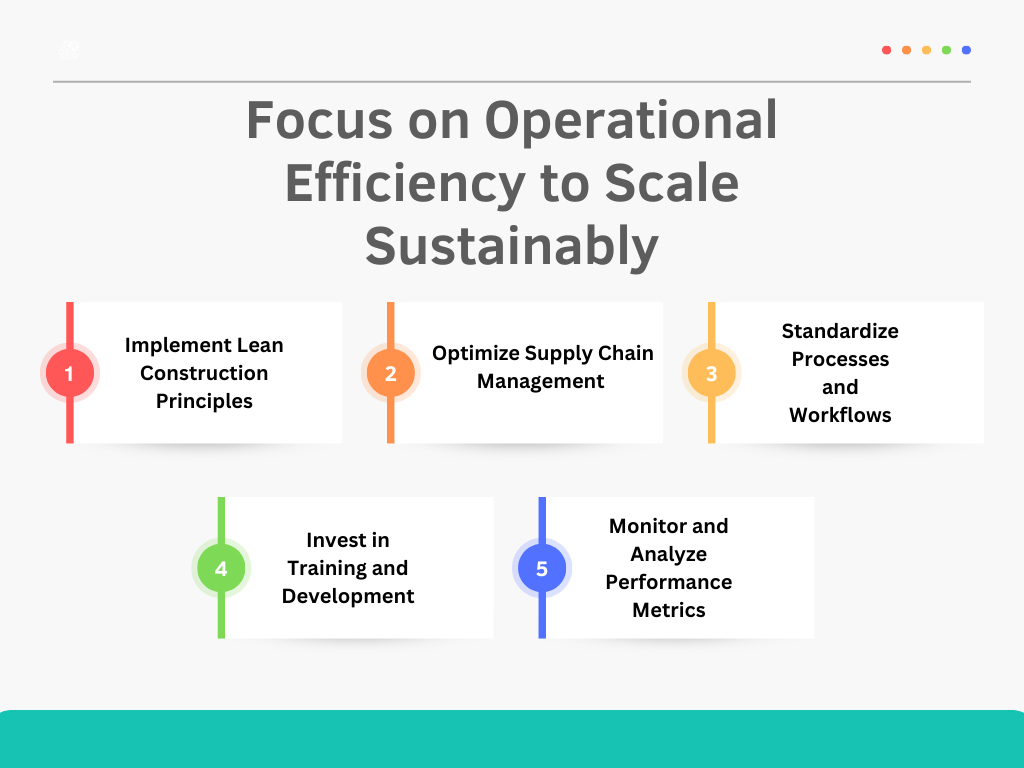
- Implement Lean Construction Principles : Lean construction focuses on minimizing waste and maximizing value in every aspect of a project. By adopting lean principles, such as just-in-time delivery, continuous improvement, and value stream mapping, you can streamline processes, reduce project timelines, and improve overall efficiency.
- Optimize Supply Chain Management : Effective supply chain management is critical to keeping projects on schedule and within budget. Establish strong relationships with suppliers, negotiate favorable terms, and implement inventory management systems to ensure that materials are delivered on time and in the right quantities.
- Standardize Processes and Workflows : Standardizing processes and workflows across your projects can help maintain consistency and efficiency as your business scales. Develop standardized procedures for common tasks, such as project planning, procurement, and quality control, and ensure that all team members are trained in these processes.
- Invest in Training and Development : Continuous training and development are essential for maintaining a skilled workforce that can handle the demands of larger projects. Offer regular training sessions on the latest construction techniques, technologies, and safety practices to keep your team up-to-date and capable of delivering high-quality work.
- Monitor and Analyze Performance Metrics : Tracking key performance indicators (KPIs) is crucial for identifying areas where efficiency can be improved. Monitor metrics such as project completion time, cost variance, labor productivity, and client satisfaction to gain insights into your business’s performance and make data-driven decisions for improvement.
Tip : Regularly review and refine your operational processes to ensure they remain effective as your business grows. Small improvements can lead to significant gains in efficiency and profitability.
Expand Your Talent Pool to Support Growth
The success of a design and build business depends largely on the talent behind it. As you scale, attracting and retaining skilled professionals becomes increasingly important. Here’s how to build a strong team:
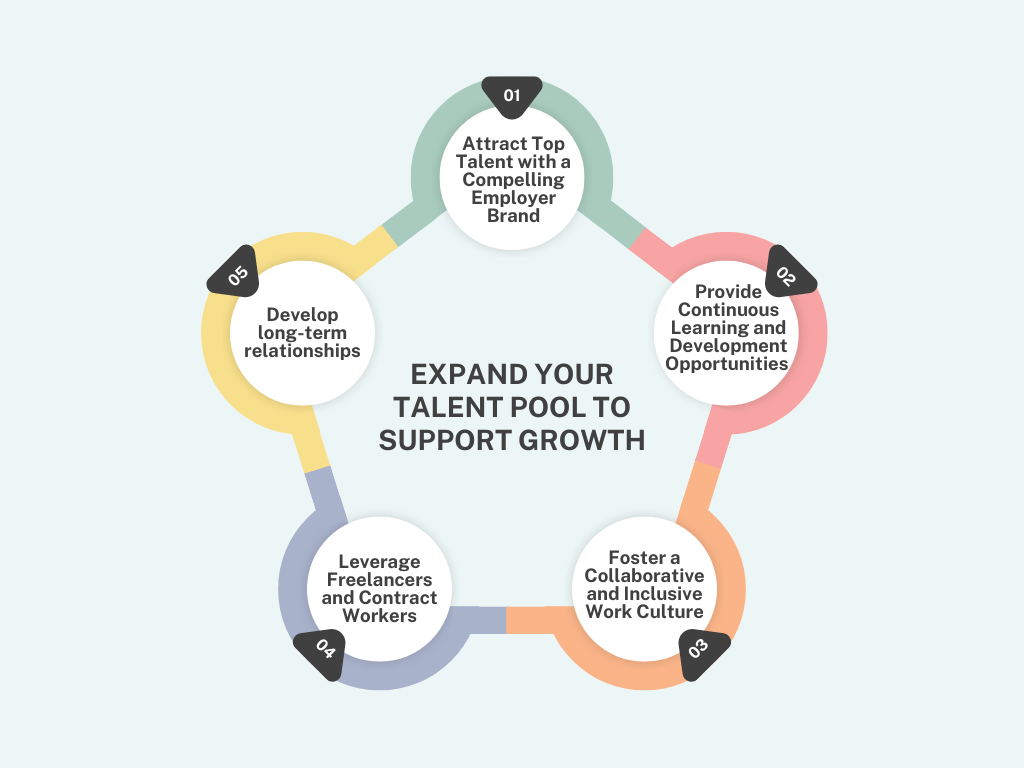
- Attract Top Talent with a Compelling Employer Brand : A strong employer brand can help you attract top talent in the competitive construction industry. Highlight your company’s values, culture, and career development opportunities in your recruitment efforts. Consider offering perks such as flexible working arrangements, competitive salaries, and opportunities for advancement to make your business an attractive place to work.
- Provide Continuous Learning and Development Opportunities : Investing in your team’s professional development is essential for retaining top talent and keeping them engaged. Offer training programs, workshops, and mentorship opportunities that help employees develop new skills and advance in their careers. This not only benefits your team but also ensures that your business stays ahead of industry trends and innovations.
- Foster a Collaborative and Inclusive Work Culture : A positive work culture that encourages collaboration, creativity, and inclusivity can significantly enhance employee satisfaction and retention. Promote open communication, recognize and reward achievements, and create an environment where all team members feel valued and supported.
- Leverage Freelancers and Contract Workers : As your business scales, consider leveraging freelancers and contract workers to manage fluctuations in project demand. This can provide the flexibility needed to take on larger projects without the long-term commitment of additional full-time staff. However, ensure that freelancers are well-integrated into your team and aligned with your company’s standards and processes.
- Develop Leadership and Succession Planning : As your business grows, developing leadership within your team becomes increasingly important. Identify potential leaders early on and provide them with the training and experience needed to take on more significant roles. Succession planning ensures that your business remains stable and continues to thrive even as key personnel move on or retire.
Tip : Create a workplace culture that values innovation, collaboration, and continuous improvement. This will not only attract top talent but also foster an environment where your team can thrive and contribute to your business’s growth.
Explore New Markets to Drive Growth
Expanding into new markets is a powerful way to grow your design and build business. Whether it’s entering new geographic regions or targeting different client segments, diversification can open up new revenue streams and reduce reliance on a single market. Here’s how to explore new markets effectively:
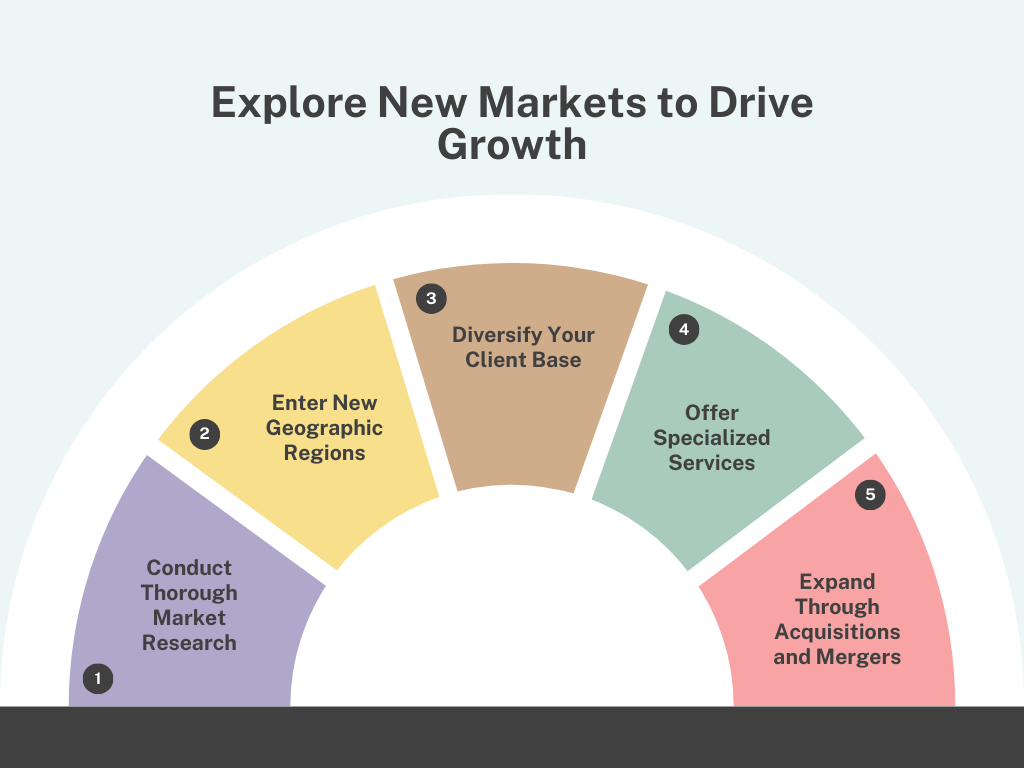
- Conduct Thorough Market Research : Before entering a new market, it’s essential to conduct thorough research to understand the specific needs, challenges, and opportunities it presents. This includes analyzing the local economy, regulatory environment, competition, and client preferences. Use this information to tailor your services and marketing strategies to meet the unique demands of the new market.
- Enter New Geographic Regions : India’s diverse construction market offers opportunities in both urban and rural areas. Expanding into new regions can help you tap into emerging markets and reduce dependency on a single location. Consider factors such as population growth, infrastructure development, and local construction trends when selecting new regions to enter.
- Diversify Your Client Base : Targeting different client segments, such as commercial, residential, or industrial, can provide additional growth opportunities. Diversification can also help mitigate risks associated with market fluctuations in specific sectors. Tailor your services and marketing efforts to appeal to the unique needs of each client segment.
- Offer Specialized Services : Specializing in niche services, such as green building, heritage restoration, or luxury construction, can set your business apart and attract clients looking for specific expertise. This can also allow you to command higher fees and reduce competition in your chosen niche.
- Expand Through Acquisitions and Mergers : Acquiring or merging with other companies can be an effective way to enter new markets and expand your service offerings quickly. This approach allows you to leverage the existing client base, resources, and expertise of the acquired company, accelerating your growth.
Tip : When expanding into new markets, start with a pilot project to test the waters before committing significant resources. This allows you to assess the market’s potential and make any necessary adjustments before scaling your efforts.
Leverage India’s Vibrant Startup Ecosystem
India’s startup ecosystem is one of the fastest-growing in the world, offering numerous resources and opportunities for businesses looking to scale. Design and build startups can benefit from this ecosystem in various ways:

- Access to Funding and Investment : One of the biggest challenges for startups is securing the capital needed to scale. India’s startup ecosystem offers various funding opportunities, from venture capital and angel investors to government grants and loans. Engaging with startup incubators and accelerators can also provide access to funding, as well as mentorship and networking opportunities.
- Participate in Startup Competitions and Challenges : Participating in startup competitions and challenges can provide valuable exposure and recognition for your business. These events often attract investors, industry experts, and potential clients, offering opportunities to showcase your business and gain valuable feedback.
- Engage with Startup Communities and Networks : Joining startup communities and networks, such as Startup India, NASSCOM 10,000 Startups, or local entrepreneur groups, can provide access to valuable resources, mentorship, and networking opportunities. These communities often host events, workshops, and seminars that can help you stay informed about industry trends and connect with other entrepreneurs.
- Take Advantage of Government Initiatives and Incentives : The Indian government offers various initiatives and incentives to support startups, including tax exemptions, grants, and subsidies. Stay informed about these opportunities and take advantage of them to reduce costs and accelerate your growth.
- Collaborate with Other Startups : Collaborating with other startups can lead to innovative solutions and new business opportunities. Whether it’s partnering on a joint project, sharing resources, or developing new technologies, these collaborations can provide a competitive edge and drive growth.
Tip : Stay proactive in seeking out opportunities within the startup ecosystem. Regularly attend events, engage with mentors, and explore funding options to ensure your business continues to grow and thrive.
Conclusion
Scaling a design and build business in India’s dynamic and competitive market requires a strategic approach that addresses the unique challenges and opportunities of the industry. By embracing technology, building a strong brand, forming strategic partnerships, focusing on operational efficiency, expanding your talent pool, exploring new markets, and leveraging the startup ecosystem, your business can achieve sustainable growth and success.
With the right strategies in place, your design and build business can not only navigate the challenges of scaling but also capitalize on the vast opportunities that India’s construction industry has to offer. Whether you’re a startup just getting off the ground or an established business looking to expand, these strategies will help you build a strong foundation for long-term success in the Indian market.




